e-MDs reports that 2010 was a record year in terms of revenue and employee growth. Employee count grew 31% to 275. I noted that the e-MDs booth at HIMSS was constantly busy, so I’m guessing they are getting their fair share of HITECH-related business.

Former PayPal exec Jason Portnoy joins Practice Fusion as CFO. He served as PayPal’s VP of financial planning and analysis and worked through PayPal’s IPO and acquisition by eBay. I’ll take that as a clue about Practice Fusion’s ownership strategy.
Advanced Pain Centers (MO) selects McKesson’s Practice Complete for physician billing, coding and reporting services.

Hattiesburg Clinic (MS) to will go live on Epic in September.
The Voice of America profiles the use of social networks in healthcare, focusing on Dr. Jeff Livingston of MacArthur OB/Gyn (TX). Dr. Livingston and his partners are social media savvy and actively use Facebook, MySpace, and Twitter to communicate with patients. The practice also relies on Sage Healthcare software for its patient portal.
The AMA and 37 medical societies send a letter to the ONC urging more flexibility on the proposed next stage of Meaningful Use in order for more physicians to successfully participate. The AMA urges the ONC to “take into account the current technological realities and the financial and administrative burdens placed on physicians.” Proposed actions include:
- Conduct a CMS and ONC survey of physicians who are and are not participating in Stage 1 to identify barriers to and solutions for physician participation before moving to Stage 2
- Allow physicians to exclude measures for meeting Meaningful Use that do not apply to their routine practice
- Remove any measure that requires adherence from a party that is not a physician
- Eliminate the high reporting thresholds for objectives that cannot currently be met due to the lack of available tools or health information exchanges
- Assess each measure from Stage 1 before moving it to Stage 2 to ensure each is relevant and needed.
Meanwhile, AARP, AFL-CIO, Consumers Union and other organizations send their own letter to the ONC, applauding Stage 2 requirements and even identifying areas that could be strengthened. And the lines are drawn.
Those wacky guys at Nuesoft Technologies release a new video as part of its “Who’s Your Biller” series. Nuesoft was nominated for a HISsie in the most fun vendor category, by the way. They didn’t win (athenahealth took the honors) but they were definitely worthy contenders. Nuesoft also just added a couple new podcasts to its site. These short clips are not silly and fun like the “Who’s Your Biller” video, but informative and worthy of a peek, nonetheless: Regulatory Hurdles Confronting Telemedicine and College Health Insurance Billing.
ADP’s Acquisition of AdvancedMD
Yesterday we posted a news blast about ADP’s acquisition of PM/EMR vendor AdvancedMD. Here’s my take: over the years AdvancedMD has won a couple of Best in KLAS awards for their practice management product and just over a year ago purchased PracticeOne EHR, which has also performed well in KLAS. With 10,000 physician users in 4,100 practices, they are hardly a fly-by-night player. Despite being profitable and being owned by private equity investor Francisco Partners, their relatively small size has likely kept them out of a few deals. As Morgan alludes to below, plenty of small EMR companies have sold to big vendors (or disappeared altogether) leaving users with an uncertain future or as EMR orphans. Buyers don’t like uncertainty.
Now that it’s part of ADP, AdvancedMD immediately joins the ranks of the “safer choices,” or at least as safe as any EMR product or company can be in the face of unknown Meaningful Use requirements and health reform. ADP does not have any competing products, so product sunsetting is not a concern. Meanwhile, ADP gets to dip its toe into one of the hottest markets: HIT.
Only time will tell if the two companies will be able to achieve the synergies they desire, but from my vantage point, it’s a great strategic move for both companies. ADP’s stock price closed Wednesday at $49.83 (up less than 1%)
I also had a chance to chat with AdvancedMD president and CEO Eric Morgan, who shared a few highlights of the deal.
Give me some background on the acquisition.

I wanted to let you know you were the first ones we thought of and wanted to get something out to you today. We wanted to help you break some additional details and have this conversation out on HIStalk and on HIStalk Practice or both.
Basically the headlines you saw in the press release: ADP, a company that most of us know, has done a lot of homework in looking at the marketplace and made a decision. They have had a strategy in place to look at adjacent opportunities to grow their business and this is one they have been looking at for well over a year – meaning the smaller to medium size physician space that AdvancedMD targets and serves. So, they have gotten on this for some time.
AdvancedMD, while we were not for sale, being owned by a private equity firm Francisco Partners … they engaged in a conversation with them some months ago, which has led up to this today. The matchup between the two companies is very strong. They are certainly focused on our cloud-based, SaaS-based offering; in fact, they narrowed the field of opportunities down pretty quickly by saying that was the way they wanted to go. They were not going to offer an on-premise approach, so this is very much compatible with what they do with the rest of their business. This was a big part of what they saw.
The key is they saw value in the business we built here in serving these smaller physician offices, which you know, what we do is not easy to do efficiently and effectively. Certainly a lot of vendors in this space have struggled in this. They saw tremendous value in that. This is a big statement for healthcare IT, that a company the likes of ADP has made a big commitment, investment into moving into the space from outside the traditional list of folks that you and I are used to talking about.
I am correct in saying this is ADP’s first entrance into the physician EMR and PM world?
Absolutely.
What are the plans for keeping the existing management team in place?
I am going to be here. My management team is going to be l be here. In fact, the management was one of the things they focused on that they felt was a critical part of the acquisition. So they are going to keep us in place running as a division and we are going to continue to operate and grow the business from Salt Lake City, UT
Any plans to leverage ADP’s existing sales force, for example, through ADP’s Small Business Services group?
Yes, absolutely. If you look at their Small Business Services division, that group has across all industries nearly half a million businesses that use ADP products. They have 14,000 physician practices that use ADP products, representing over 45,000 physicians. As you can imagine, that opportunity of cross selling offerings and services is a significant part of this.
We will look at how we can work together and integrate products. All that is part of the plans and we are going to be rolling that out over time. Certainly for an ADP client who is interested in practice management or EMR, this makes a very good opportunity for the client to connect very quickly.
One of the key things I would say, which I think is really relevant, is this is a time when physicians – healthcare – is being asked to make major investments into HIT. We all know that, right? We just came from HIMSS we have Meaningful Use up to our eyeballs. The reality is that these are going to be fun and interesting and challenging times ahead of us. But, it is our belief that as times goes on, physicians, much like on the hospital side, more and more will be looking to a trusted leader and a trusted brand. And that scaling of an organization is going to matter more and more.
There are literally hundreds of players in this space today. I don’t know any informed person in the industry who would expect the same 100 to be around in the next few years. We believe this puts us in a very strong position to be able to give our customers the confidence that they are going with a very, very strong reputable organization like ADP and know that they have a long term commitment and relationship and investment in the marketplace.
And the other important thing is I think is that for our customers and prospective customers, it takes the question out of the market place: what will happen next for AdvancedMd, which is kind of the case with a lot of the players in this market. Knowing that the possibility that this day would come, the question would depend on who the acquiring company would be; that would dictate a lot of the impact on the customer. One of the most significant things – I can’t emphasize this enough – this gives clarity to the answer and it also gives the clarity that this is the product and organization that is going to be committed to going forward.
If we were inside a larger healthcare IT company, there would still be all the questions of survival of products and integration of product and which product is going to end up being the one to go with. For us, all the questions and anxieties are alleviated now. Some of the biggest competitors in the marketplace still have big question marks around this issue, but our path forward could not be clearer.
Anything else you would like to add?
I would say again the key theme here is this is an opportunity for growth and an opportunity for our employees and for our customers. We have been growing at approximately 30% compounded over the last several years. It’s kind of fun to think about growing at an even faster rate over the next five years as a result of this.
The intent is to make significant investment into our products, come out with more products, integrate them to existing products, and really do more and more. And that includes not only our physician practices, but also our billing partners. We have over 300 billing service companies that use our products to serve their customers. Those are a very important part of our strategy going forward and a big part of the value that ADP placed on the organization in terms of what we have done here.
What everyone should expect is more of the same, but even taking it to new levels in terms of our offerings and our scale. As I told my employees, we are going to be hiring and expanding and we are going to be growing, so there is opportunity across the board. We think that just having the ADP brand attached to our brand is very powerful in and of itself. The vast majority of our business comes in through the web and web marketing. By having such a big strong name behind us we believe that is going to get even better.
As I look at AdvancedMD and I think about all the possible outcomes we could have had, I really cannot think of a better outcome than this. If you had asked me two years do I think that ADP is a likely suitor, I would have said, “No.” It wasn’t on my list. But the more I know and the more I understand, the more I see our businesses are compatible; I would probably say the more sense this really makes and I really can’t think of a better outcome for our employees, for the future of the company, and most importantly for our clients and future clients, for all the reasons I have described.
What has been the reaction of employees and customers?
The reaction from the employees has been really good. A lot of excitement and buzz here. We feel like the timing couldn’t be better for this as we look to capitalize on what is ahead of us for the next few years in this marketplace and as we establish ourselves.
When you think about it, I count maybe six or seven or eight vendors, depending on who you put on the list, that are bigger than AdvancedMD, and certainly there are certainly many very large ones out there compared to us. We are of a size now that there are only a handful or two of folks that are actually bigger than us, yet there are hundreds and hundreds that are smaller than us.
I think this puts us in a position to stake a claim amongst the leaders and larger and most well known companies in the industry as we go forward over the next few years and look at the kind of adoption curve we are expecting. And it will give peace of mind to clients and prospects to know that they have that kind of backing, and that is very exciting.
We actually had a handful of clients that we ran through briefings in advance and it has been very positive. I just talked to one of my sales manager working on a fairly substantial client opportunity and it was interesting. The conversation took place in the middle of the sales cycle. We said, “OK, we want to talk through this announcement.” Their reaction was, “We are already using four ADP products, so let’s talk about how do we are going to make it all work together.” It’s just an anecdote, but the synergies that can come from this are powerful.

E-mail Inga.



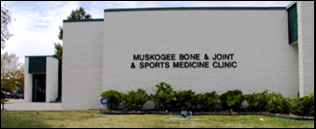



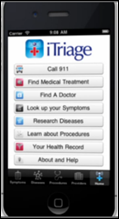









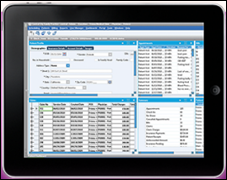

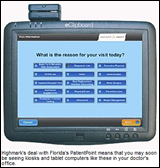
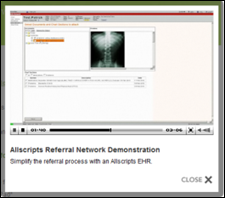


The article about Pediatric Associates in CA has a nugget with a potentially outsized impact: the implication that VFC vaccines…